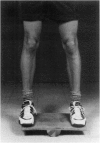Abstract
Objective:
To examine the effects of a 6-week strength and proprioception training program on clinical measures of balance, and to introduce characteristics of a single-case research design that may be beneficial to the athletic training profession as both a research and a clinical tool.
Design and Setting:
A multiple baseline design across subjects was used to assess the effects of the intervention. The training program was performed three times a week and consisted of manual muscle strengthening and proprioception training for the plantar flexor, dorsiflexor, inversion, and eversion muscle groups.
Subjects:
Three subjects (age = 17.6 ± 1.24 yr, wt = 78.6 ± 1.07 kg, ht = 186.2 ± 4.3 cm) who had previously sustained first-degree lateral ankle sprains.
Measurements:
Dynamic balance was tested three times a week using a single-plane balance board (SPBB). Each subject was tested for two double-leg conditions (forward/backward, right/left) and one single-leg condition (forward/backward) for each extremity. The dependent variable was the number of times that the balance board made contact with the floor. Visual inspection was used to evaluate whether the treatment resulted in a change of performance.
Results:
Although the intervention did not produce obvious improvements in balance for all evaluation criteria for all testing conditions, it is apparent that the strength and proprioception training program positively influenced all three subjects' ability to balance dynamically on an SPBB. A change in mean scores from baseline to intervention phase was evident for all testing conditions. However, a change in slope and level was not as apparent for all testing conditions, especially the single-leg conditions.
Conclusion:
The results revealed that the strength and proprioception training program produced improvements in the ability to balance as assessed dynamically on an SPBB.
Keywords: ankle sprain, postural sway
Full text
PDF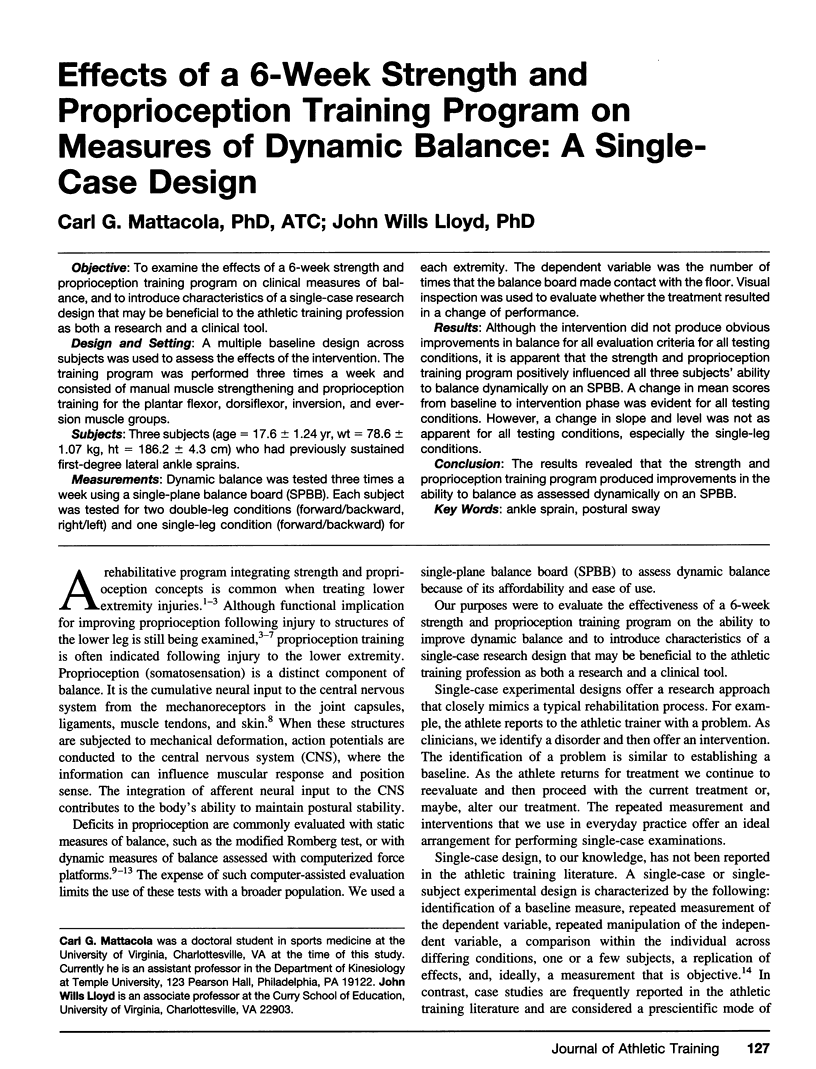
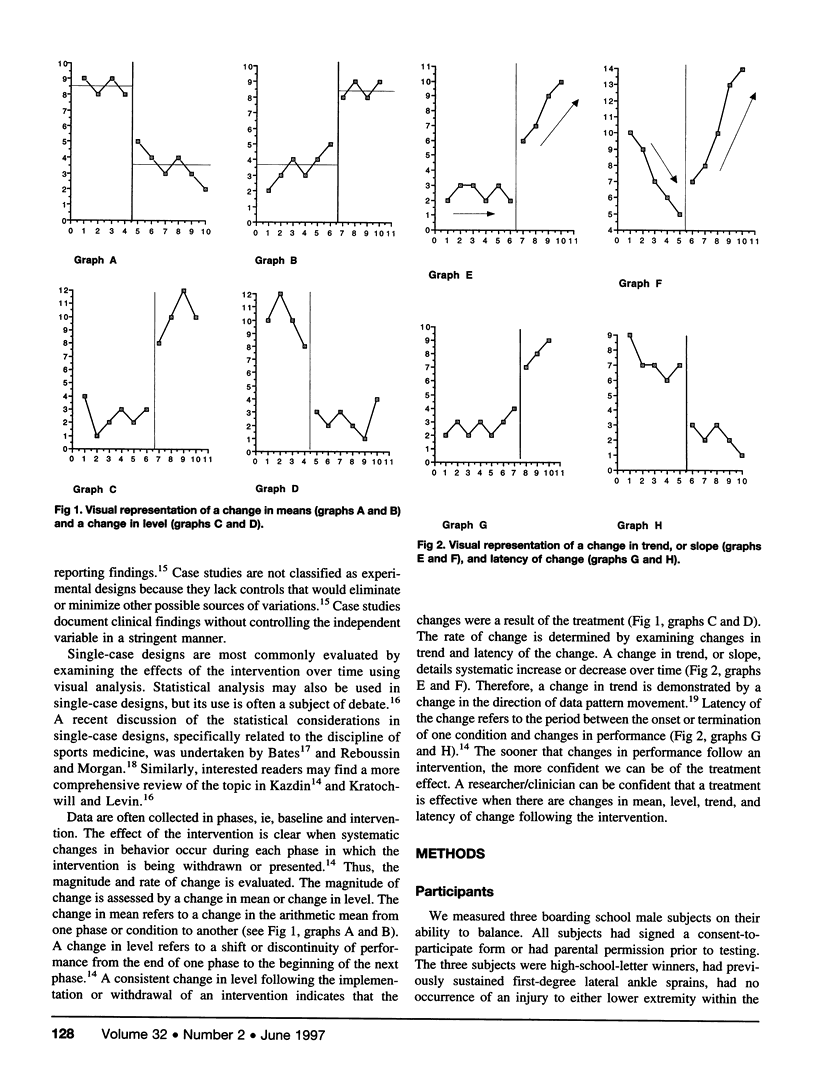
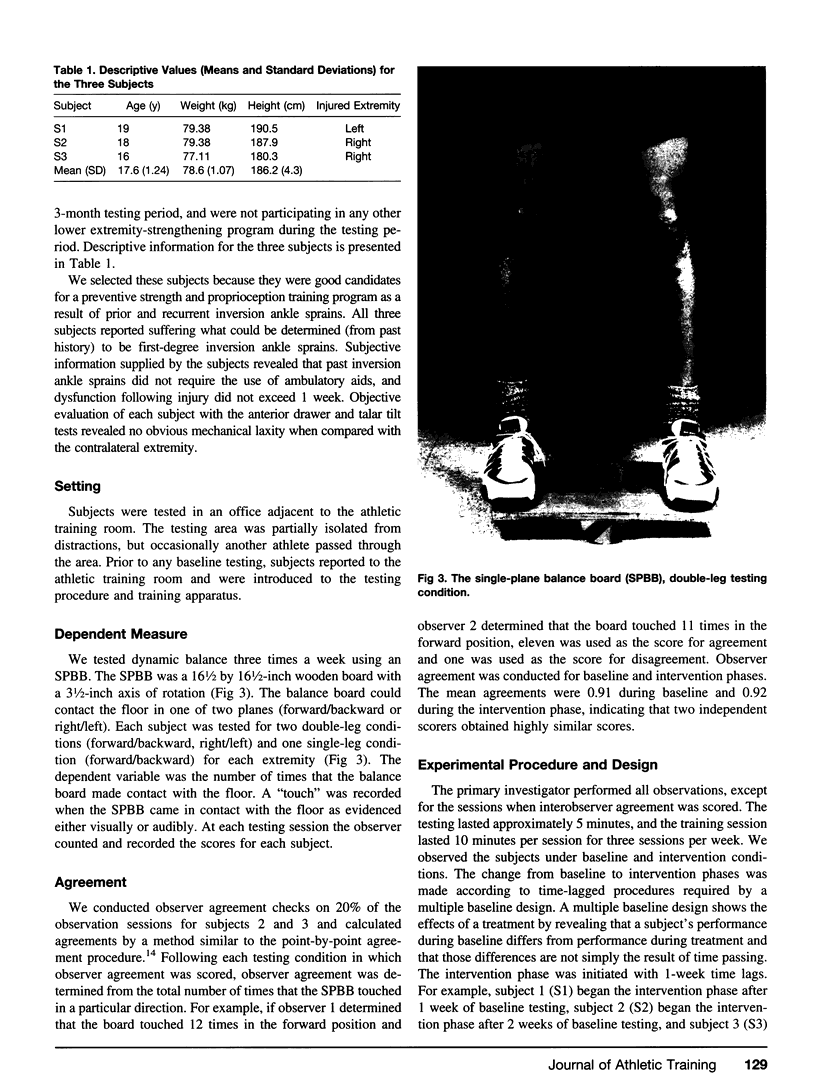
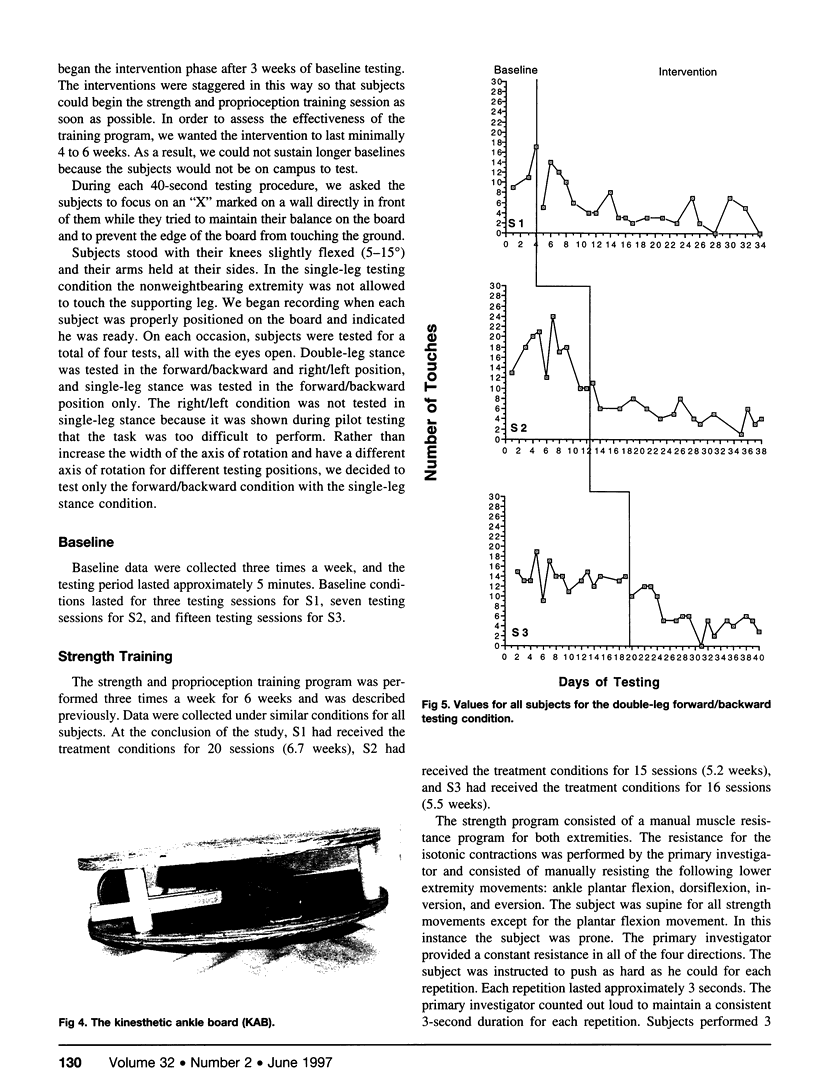
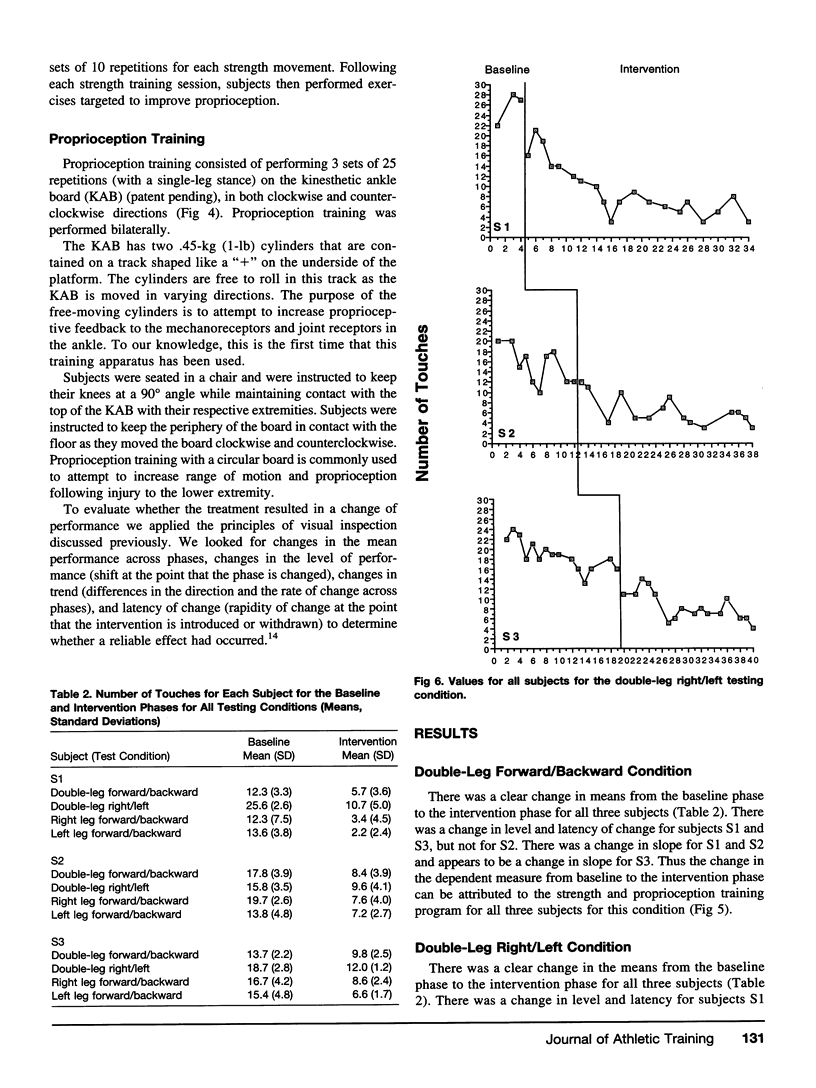
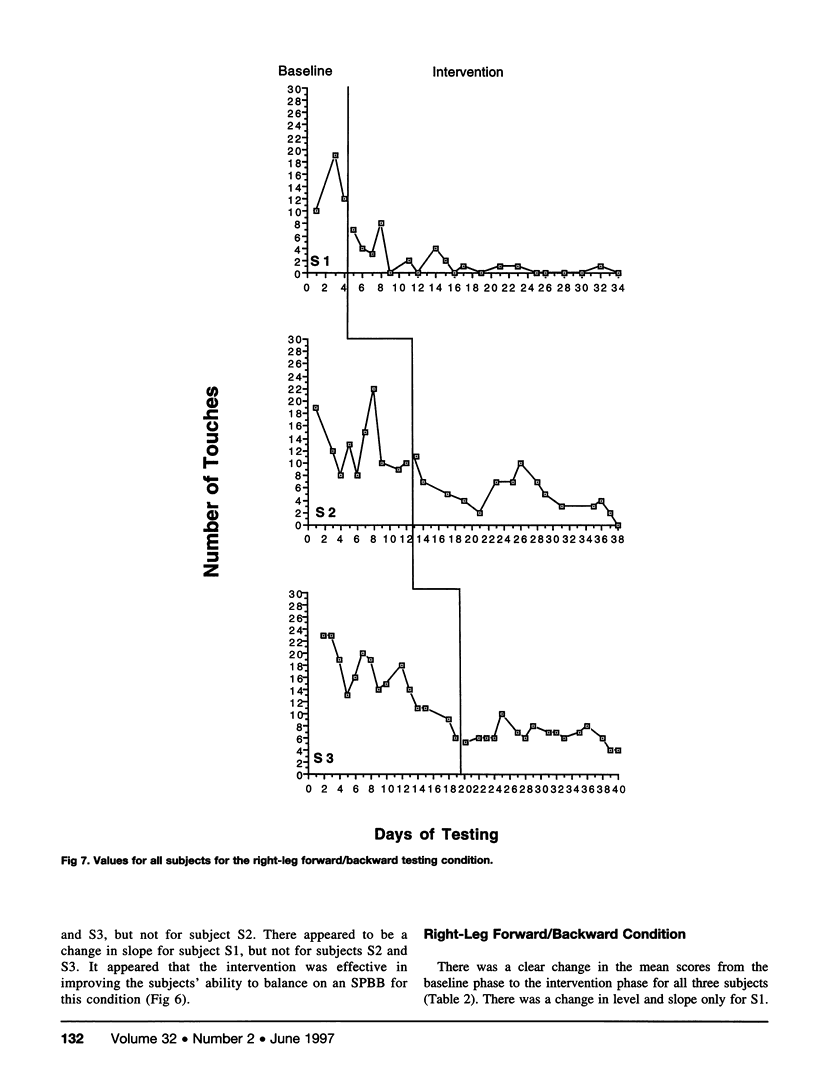
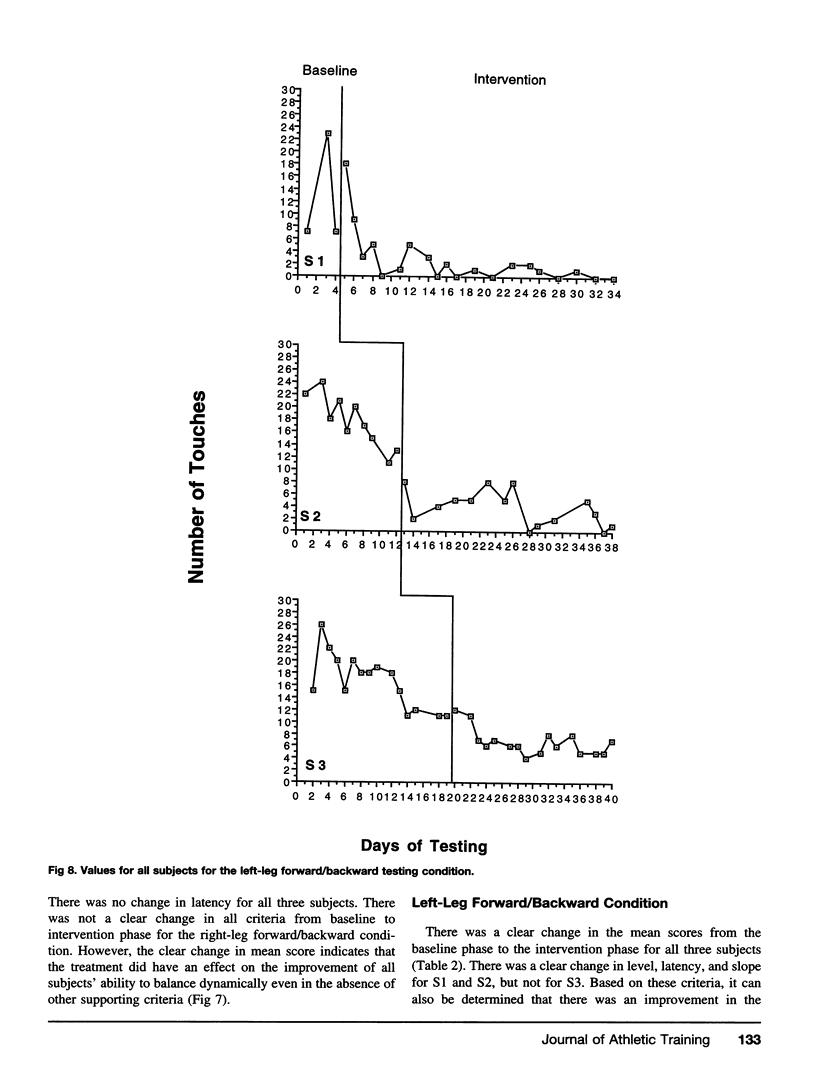
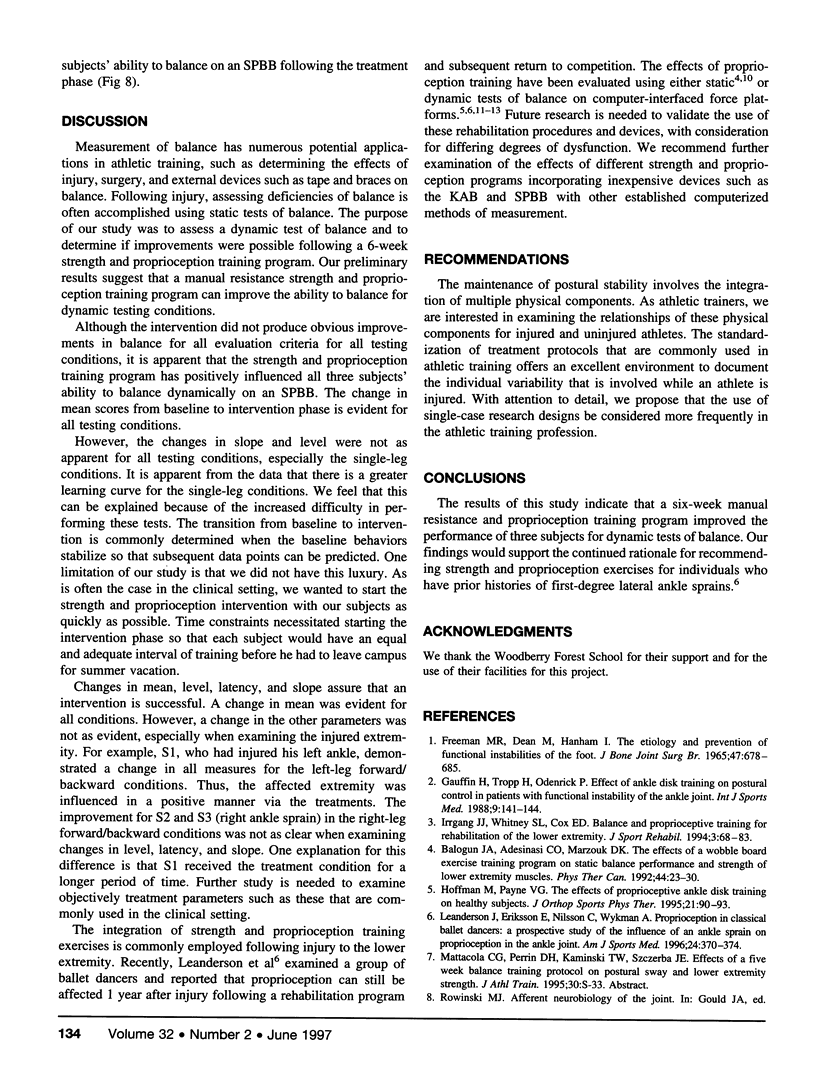

Images in this article
Selected References
These references are in PubMed. This may not be the complete list of references from this article.
- Bates B. T. Single-subject methodology: an alternative approach. Med Sci Sports Exerc. 1996 May;28(5):631–638. doi: 10.1097/00005768-199605000-00016. [DOI] [PubMed] [Google Scholar]
- Freeman M. A., Dean M. R., Hanham I. W. The etiology and prevention of functional instability of the foot. J Bone Joint Surg Br. 1965 Nov;47(4):678–685. [PubMed] [Google Scholar]
- Fridén T., Zätterström R., Lindstrand A., Moritz U. A stabilometric technique for evaluation of lower limb instabilities. Am J Sports Med. 1989 Jan-Feb;17(1):118–122. doi: 10.1177/036354658901700120. [DOI] [PubMed] [Google Scholar]
- Gauffin H., Tropp H., Odenrick P. Effect of ankle disk training on postural control in patients with functional instability of the ankle joint. Int J Sports Med. 1988 Apr;9(2):141–144. doi: 10.1055/s-2007-1024996. [DOI] [PubMed] [Google Scholar]
- Gonnella C. Single-subject experimental paradigm as a clinical decision tool. Phys Ther. 1989 Jul;69(7):601–609. doi: 10.1093/ptj/69.7.601. [DOI] [PubMed] [Google Scholar]
- Harrison E. L., Duenkel N., Dunlop R., Russell G. Evaluation of single-leg standing following anterior cruciate ligament surgery and rehabilitation. Phys Ther. 1994 Mar;74(3):245–252. doi: 10.1093/ptj/74.3.245. [DOI] [PubMed] [Google Scholar]
- Hoffman M., Payne V. G. The effects of proprioceptive ankle disk training on healthy subjects. J Orthop Sports Phys Ther. 1995 Feb;21(2):90–93. doi: 10.2519/jospt.1995.21.2.90. [DOI] [PubMed] [Google Scholar]
- Leanderson J., Eriksson E., Nilsson C., Wykman A. Proprioception in classical ballet dancers. A prospective study of the influence of an ankle sprain on proprioception in the ankle joint. Am J Sports Med. 1996 May-Jun;24(3):370–374. doi: 10.1177/036354659602400320. [DOI] [PubMed] [Google Scholar]
- Mattacola C. G., Lebsack D. A., Perrin D. H. Intertester reliability of assessing postural sway using the chattecx balance system. J Athl Train. 1995 Sep;30(3):237–242. [PMC free article] [PubMed] [Google Scholar]
- Nies N., Sinnott P. L. Variations in balance and body sway in middle-aged adults. Subjects with healthy backs compared with subjects with low-back dysfunction. Spine (Phila Pa 1976) 1991 Mar;16(3):325–330. doi: 10.1097/00007632-199103000-00012. [DOI] [PubMed] [Google Scholar]
- Reboussin D. M., Morgan T. M. Statistical considerations in the use and analysis of single-subject designs. Med Sci Sports Exerc. 1996 May;28(5):639–644. doi: 10.1097/00005768-199605000-00017. [DOI] [PubMed] [Google Scholar]
- Wolery M., Harris S. R. Interpreting results of single-subject research designs. Phys Ther. 1982 Apr;62(4):445–452. doi: 10.1093/ptj/62.4.445. [DOI] [PubMed] [Google Scholar]



